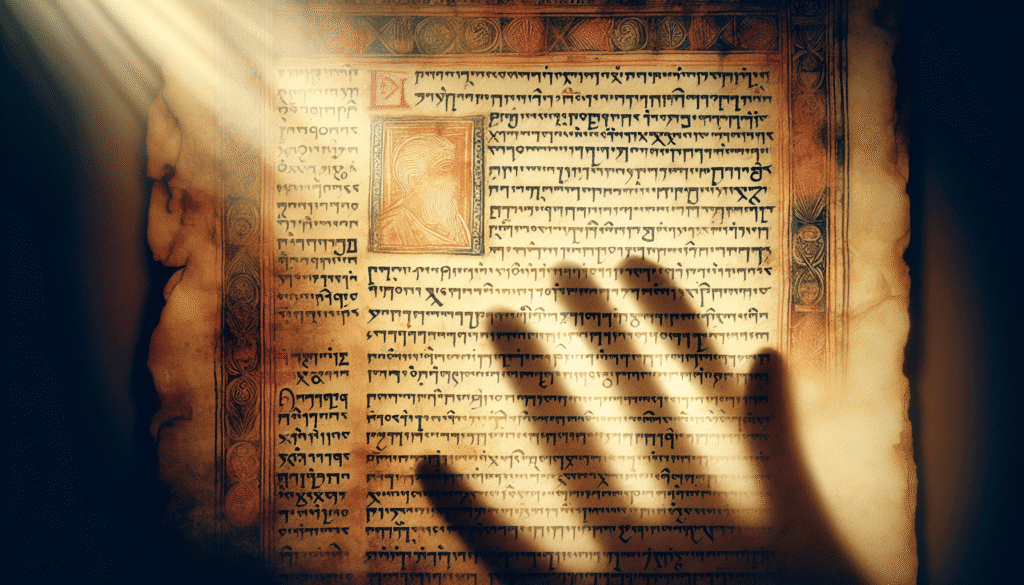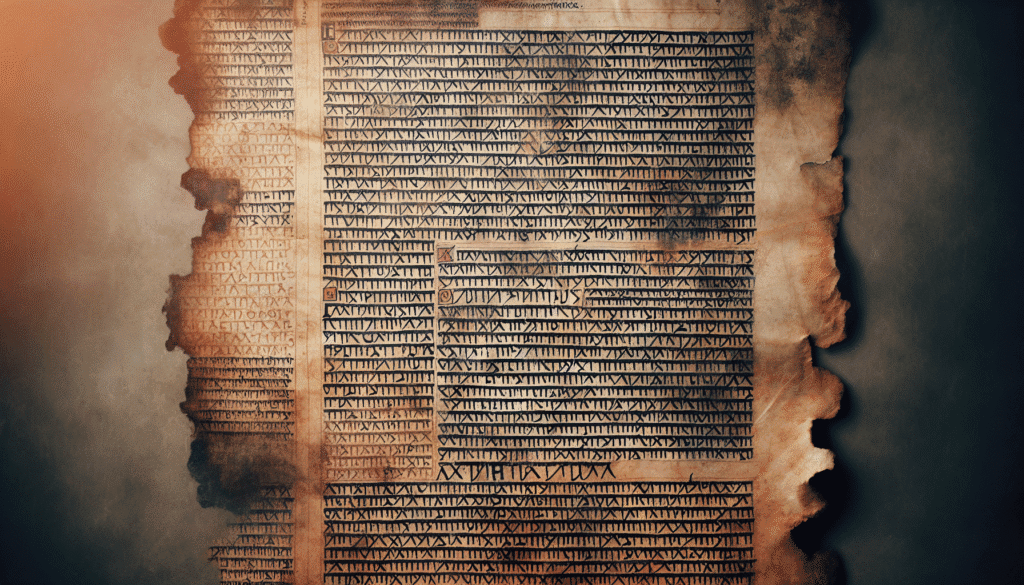Do you know the major differences between the Sinaiticus and Vaticanus manuscripts? This topic might seem esoteric to some, but understanding these two ancient texts’ nuances is a gateway into how biblical texts have been transmitted over the centuries. As someone with years of study in theological history and a PhD in Theology, I’ve spent countless hours analyzing these ancient manuscripts. Given the growing interest in digital humanities and historical linguistics, the importance of understanding the Sinaiticus and Vaticanus is more relevant now than ever, especially as scholars and enthusiasts strive to authenticate ancient texts in a digital era. By 2025, advancements in technology will likely make these manuscripts more accessible to laypeople than ever before, but understanding their differences requires more than a cursory glance.
Quick Overview
Let’s provide a quick overview for those of you in a rush. The Codex Sinaiticus and Codex Vaticanus are pivotal fourth-century Greek texts critical for biblical scholarship. Both are highly respected and widely consulted for studying the New Testament’s original language and textual history. While they have widespread similarities, differences in order, contents, and specific wording exist between them, with each possessing unique characteristics that have influenced biblical translations. This guide will explore the historical context, textual variances, and the implications of these differences in scholarly and religious settings. You can expect to understand how these two ancient manuscripts compare and how they’ve each shaped the understanding of biblical texts.

Historical Context
Origins of Codex Sinaiticus
Codex Sinaiticus, often referred to as the “Sinai Bible,” is one of the oldest and most complete manuscripts of the Christian Bible in existence. Discovered in the mid-19th century by scholar Constantin von Tischendorf at St. Catherine’s Monastery in the Sinai Peninsula, it dates back to around 330–360 AD. Imagine unearthing such an incredible artifact that contains almost all of the New Testament and a substantial portion of the Old Testament in Greek. Sinaiticus does not just offer text; it is a window into the ecclesiastical and textual history of early Christianity.
Origins of Codex Vaticanus
In contrast, the Codex Vaticanus has been housed in the Vatican Library (thus its name) for as long as records show. Thought to originate around the same time as Sinaiticus, Vaticanus is noted for its completeness and its role in shaping the critical editions of the Greek New Testament. The discovery context might not be as dramatic as that of Sinaiticus, but Vaticanus possesses its own aura of mystery and scholarly intrigue, contributing significantly to the formation of biblical canons.
Similarities Between Sinaiticus and Vaticanus
Both of these codices hail from the highly fruitful textual period of the 4th century, a time when Christianity was solidifying its scriptures. They are both written in Greek uncial script, a style of writing that captures the austere elegance of ancient Greek manuscripts. Furthermore, both serve as key witnesses to what is known as the Alexandrian text-type, praised for its relative closeness to what many scholars believe was the original text of the New Testament.
Textual Differences
Variations in Order and Content
When you lay both manuscripts side by side, the Codex Vaticanus includes nearly the entire Bible but ends abruptly at Hebrews 9:14, missing the later part of the New Testament books. On the other hand, Codex Sinaiticus includes significant portions of Old Testament books not found in Vaticanus, such as the Book of Tobit and the Book of Judith.
Linguistic Discrepancies
The subtle yet significant differences in word choice and syntax speak volumes. Sinaiticus tends to paraphrase more than Vaticanus, leading to variance in the New Testament’s language. For example, scholars often debate the phrasing in passages like Mark 1:2-3, where Sinaiticus and Vaticanus diverge slightly. These differences have implications for the meaning readers might derive from these texts.
Added Texts and Omissions
Given their antiquity, both manuscripts have undergone numerous revisions. Sinaiticus is famous for containing texts not circulated widely in later Bibles, including the Shepherd of Hermas and the Epistle of Barnabas. In contrast, portions like the “Long Ending of Mark” are missing in Vaticanus, leading scholars to examine why scribes would add or omit certain texts over centuries.

Theological Implications
Influence on Modern Translations
When you pick up a Bible today, it’s easy to think the text is set in stone. However, differences in these codices illustrate the vibrant evolution of biblical interpretation. Translations like the English Standard Version (ESV) and the New International Version (NIV) often rely on Sinaiticus and Vaticanus to address biblical inerrancy and inspiration. How might these translations differ if one codex was prioritized over the other? Such is the question textual critics and translators face constantly.
Interpretive Variability
The discrepancies between Sinaiticus and Vaticanus underscore the interpretive richness of biblical texts. The wording or inclusion of certain phrases can radically alter theological interpretations. Take John 1:18, for instance, a verse where word choice heavily influences the interpretation of Christology and the divine nature of Jesus. Each codex offers its version, inviting us to ask which best represents the “authentic” teaching.
Modern Relevance and Accessibility
Digital Access and Scholarship
As we move through the 21st century, projects like the Codex Sinaiticus Project are revolutionizing the accessibility of these manuscripts. Anyone with an internet connection can now view high-resolution images of these ancient texts. By 2025, it’s not hard to imagine a more immersive digital experience where laypeople and scholars alike can engage interactively with the manuscripts.
Interdisciplinary Studies
Sinaiticus and Vaticanus also serve as keystones for interdisciplinary studies. Whether you’re interested in linguistics, anthropology, or history, these texts provide case studies revealing how ancient societies recorded information, edited texts, and maintained cultural narratives.
Challenges in Studying the Manuscripts
Preservation and Condition
Imagine holding a text that’s nearly 1,700 years old! Both the Sinaiticus and Vaticanus have undergone complex conservation efforts. The conditions in which they have been kept—Sinaiticus in a desert monastery and Vaticanus in Europe’s temperate climate—have each posed unique challenges to preservation. Discoloration, ink fading, and physical deterioration are some of the issues that make scholarly work arduous yet rewarding.
Scholarly Debates
The textual variants in these manuscripts spark heated debates among scholars. Even a slight variation in word choice can lead to entirely different interpretations, feeding debates on the original wording of biblical texts, the significance of scribal errors, and the authenticity of various biblical accounts.
Conclusion
The differences between Codex Sinaiticus and Codex Vaticanus are not merely academic trivia; they offer a rich tapestry of insights into early Christianity and the Bible’s evolution. As we edge closer to 2025, technological advances will only enhance the depth of engagement possible with these texts. Whether you are a seasoned scholar or a curious seeker, understanding these differences is crucial to appreciating the tapestry of history, theology, and linguistics they offer.
FAQ Section
1. What makes Codex Sinaiticus unique?
Codex Sinaiticus is unique because it is one of the oldest and most complete manuscripts of the Bible, including almost all of the New Testament and parts of the Old Testament, dating back to the 4th century.
2. Why is Codex Vaticanus so important?
Codex Vaticanus is vital because it has been crucial in forming critical editions of the New Testament and is considered one of the best examples of the Alexandrian text-type.
3. How have these manuscripts influenced modern Bible translations?
Modern translations often rely on both the Sinaiticus and Vaticanus for a more accurate representation of the original texts, influencing theological interpretation and biblical inerrancy.
4. Are there any complete digital versions available for these manuscripts?
Yes, digital projects like the Codex Sinaiticus Project provide complete and high-definition images of these texts, making them accessible to both scholars and the general public online.
5. What challenges do scholars face when studying these codices?
Scholars grapple with preservation issues, textual discrepancies, and interpretive challenges, which require meticulous analysis and cross-referencing with other ancient texts.
People Also Ask
What is the primary language of Codex Sinaiticus and Codex Vaticanus?
Both texts are written in Greek, employing an uncial script style customary for that period.
How did Codex Sinaiticus get discovered?
The manuscript was discovered by Constantin von Tischendorf in the mid-19th century at St. Catherine’s Monastery in the Sinai Peninsula.
Which manuscript is older, Sinaiticus or Vaticanus?
It’s generally accepted that both were crafted around the same time, in the 4th century, but pinpointing their exact age relative to one another is challenging.
Do the differences between these manuscripts affect biblical canon?
Indeed, while they share many texts, the variances underscore the fluid nature of the biblical canon in early Christianity.
Why do scholars prefer the Alexandrian text-type?
The Alexandrian text-type, prominent in both manuscripts, is favored for its presumed proximity to the original New Testament writings, noted for its precision and lack of later additions found in other text types.
Understanding the nuances between Sinaiticus and Vaticanus is about more than textual criticism; it’s your doorway to exploring the ancient world’s rich spiritual and cultural mosaics. Knowing the difference allows you to discern how deeply these ancient collections impact not only religious beliefs but also historical understanding. May this guide inspire further inquiry and appreciation of the rich history enshrined in these venerable manuscripts.



